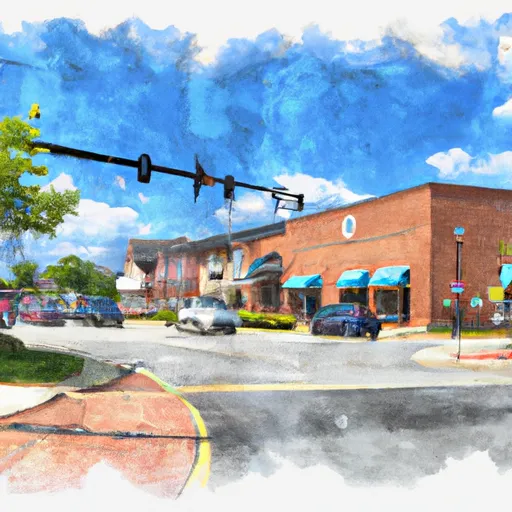-
 Snoflo Premium
Snoflo Premium
Get unlimited access to all our content
With no Ad interruptions! - Start Your Free Trial Login with existing account
Millville
Eden Index
Climate
8.3
•
Recreation
3.8
•
Community
1.4
•
Safeguard
5.0/10

Millville, Delaware is a charming town located in Sussex County, along the eastern coast of the United States. With a moderate climate, Millville experiences warm summers and cool winters. The average summer temperatures range from the low 70s to the high 80s Fahrenheit, while winter temperatures typically hover between the mid-30s to mid-40s Fahrenheit. Rainfall is evenly distributed throughout the year, with an annual average of around 45 inches.
Nestled near the Indian River Bay, Millville benefits from its hydrology constituents. The bay provides a picturesque setting for residents and visitors alike, with opportunities for boating, fishing, and other water-based activities. The nearby Atlantic Ocean offers additional recreational possibilities, such as swimming, surfing, and beachcombing.
Millville is surrounded by natural beauty, boasting various outdoor recreation opportunities. For nature enthusiasts, the nearby Holts Landing State Park presents hiking trails, birdwatching, and stunning views of the bay. Additionally, the town is in close proximity to several golf courses, providing ample opportunities for golf enthusiasts to tee off in beautiful surroundings.
In summary, Millville, Delaware offers a pleasant climate, access to the Indian River Bay and the Atlantic Ocean, and diverse outdoor recreation possibilities, making it an attractive destination for nature lovers and outdoor enthusiasts.
What is the Eden Index?
The Snoflo Eden Index serves as a comprehensive rating system for regions, evaluating their desirability through a holistic assessment of climate health, outdoor recreation opportunities, and natural disaster risk, acknowledging the profound impact of these factors on livability and well-being.
Climate Health Indicator (CHI): 8.3
Millville receives approximately
1148mm of rain per year,
with humidity levels near 84%
and air temperatures averaging around
14°C.
Millville has a plant hardyness factor of
7, meaning
plants and agriculture in this region tend to thrive during the non-winter months.
By considering the ideal temperature range, reliable water supplies, clean air, and stable seasonal rain or snowpacks, the Climate Health Indicator (CHI) underscores the significance of a healthy climate as the foundation for quality living.
A healthy climate is paramount for ensuring a high quality of life and livability in a region, fostering both physical well-being and environmental harmony. This can be characterized by ideal temperatures, reliable access to water supplies, clean air, and consistent seasonal rain or snowpacks.
Weather Forecast
Streamflow Conditions
Upper Chesapeake
Area Rivers
Upper Chesapeake
Snowpack Depths
Upper Chesapeake
Reservoir Storage Capacity
Upper Chesapeake
Groundwater Levels
Recreational Opportunity Index (ROI): 3.8
The Recreational Opportunity Index (ROI) recognizes the value of outdoor recreational options, such as parks, hiking trails, camping sites, and fishing spots, while acknowledging that climate plays a pivotal role in ensuring the comfort and consistency of these experiences.
Access to outdoor recreational opportunities, encompassing activities such as parks, hiking, camping, and fishing, is crucial for overall well-being, and the climate plays a pivotal role in enabling and enhancing these experiences, ensuring that individuals can engage in nature-based activities comfortably and consistently.
Camping Areas
| Campground | Campsites | Reservations | Toilets | Showers | Elevation |
|---|---|---|---|---|---|
| Delaware Seashore State Park | 330 | 3 ft | |||
| Cape Henlopen State Park | 155 | 3 ft | |||
| Oceanside - Assateague National Seashore | 100 | 3 ft | |||
| Assateague State Park | 350 | 1 ft | |||
| Bayside - Assateague National Seashore | 50 | 4 ft |
Nearby Fishing
Nearby Ski Areas
Catastrophe Safeguard Index (CSI):
The Catastrophe Safeguard Index (CSI) recognizes that natural disaster risk, encompassing floods, fires, hurricanes, and tornadoes, can drastically affect safety and the overall appeal of an area.
The level of natural disaster risk in a region significantly affects safety and the overall livability, with climate change amplifying these risks by potentially increasing the frequency and intensity of events like floods, fires, hurricanes, and tornadoes, thereby posing substantial challenges to community resilience and well-being.
Community Resilience Indicator (CRI): 1.4
The Community Resilience Indicator (CRI) recognizes that education, healthcare, and socioeconomics are crucial to the well-being of a region. The CRI acknowledges the profound impact of these elements on residents' overall quality of life. By evaluating educational resources, healthcare accessibility, and economic inclusivity, the index captures the essential aspects that contribute to a thriving community, fostering resident satisfaction, equity, and social cohesion.

